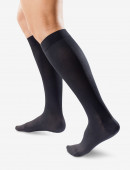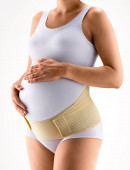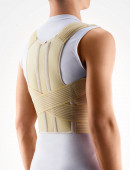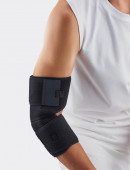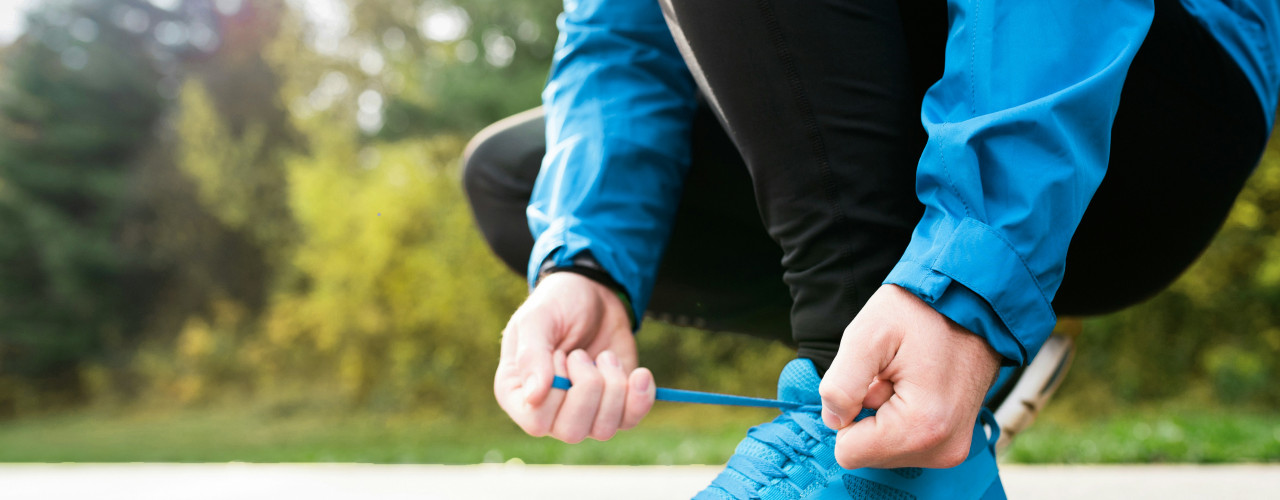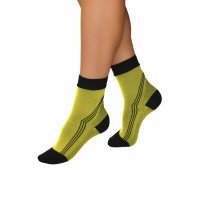With spring just around the corner, it’s important to think about how we’re going to start exercising again – running, Nordic walking, regular walking, etc. Liepaja Olympic Centre physiotherapist Aiga Korpa shares her recommendations to be observed by everyone indulging in an active lifestyle.
Choosing the correct load
The key is to remember to start with regular low to moderate intensity load to help your body to adapt. This can be active walking or Nordic walking. As you get used to the load, you can gradually increase it, along with the intensity.
It is advisable to monitor your pulse or heart rate. A pulse oximeter is used to take your pulse; if there is no pulse oximeter available, an alternative method is the “conversation test”. At medium intensity, you can still have a conversation, but at high intensity you can only say certain phrases.
For adults, at least 150 minutes of moderate-intensity exercise per week (e.g., active Nordic walking, active walking) or 75 minutes of high-intensity aerobic exercise (cycling, jogging) is recommended. They can be combined with each other. Power exercises for all muscle groups twice a week should also be included. When you resume exercising after a longer break, you can reduce the time or intensity by monitoring your pulse.
When starting physical activities, you may often feel a side stitch or experience shortness of breath. Basically, you should learn the correct breathing rhythm – one step for breathing in, two steps for breathing out, or two steps for breathing in, three steps for breathing out. If you do experience these symptoms, you need to slow down or walk until your breathing rhythm resumes.
The need for warming up and cooling down

The biggest mistake when starting to exercise is not doing enough, or skipping the warm-up and cool-down part completely. When planning physical activity, you can’t just focus on the main part, but need to take time to warm up and cool down.
The main purpose of the warm-up is to prepare the body for the training process ahead and to reduce the risk of injury. By gradually increasing your heart rate, respiratory rate and body temperature, you prepare your cardiovascular system, muscles and nervous system for workout mode. Muscles and joints become more flexible and less susceptible to injury.
Warm-up example: a slow jog for 2–3 minutes, followed by arm and leg swing exercises.
Cooling down, in turn, helps to normalise the heart rate and respiratory system after the load, reduces the risk of microtrauma, and helps to prepare the body for the next workout session. It stabilises the blood flow, supplying oxygen and nutrients to the muscles, and excretes metabolic by-products, including lactic acid, thus helping to reduce muscle pain and stiffness.
Abrupt stopping of intensive load can cause blood to accumulate in the limbs, which, in turn, can lead to dizziness.
Cool-down example – active stretching, light hold for a short moment, release. In addition, a massage roller or massage balls of different sizes can be used, thereby improving blood circulation.
Water intake

Adequate water intake helps regulate body temperature, and reduces the risk of muscle cramps and fatigue. When exercising, it is advisable to take in small amounts of water from time to time. The necessary amount of water depends on the intensity and duration of the selected load.
Choosing appropriate clothing
Clothes are what regulate our body temperature. During physical activity, the body should neither get too hot nor too cold. This means choosing clothing that is breathable, and wearing clothes in layers.
Recommended layers:
- Moisture-repellent layer
- Middle layer – for warmth
- Moisture and windproof layer
It is also worth remembering about a hat, gloves and socks – according to the season. It is advisable to choose footwear based on the intended sporting activity and weather conditions.
How can compression products help?
Compression socks can be a valuable tool for anyone willing to return to sport safely and effectively. The purpose of compression products is to apply the right amount of pressure to the veins, thereby improving blood circulation, which in turn promotes the delivery of oxygen and nutrients to the muscles, as well as excretes metabolic by-products, reducing muscle fatigue and soreness both during and after exercise.
In addition, muscle vibrations are reduced, thus protecting against the risk of micro-trauma and strains.
TONUS ELAST product line specially designed for athletes includes socks, stockings and thigh-high gaiters with or without straps. A wide range of colours is available. Everyone can choose the most comfortable type of socks to suit the specific activity or individual taste.
Compression socks will be a great companion not only for sporting activities but also for travelling, work and other everyday activities.

